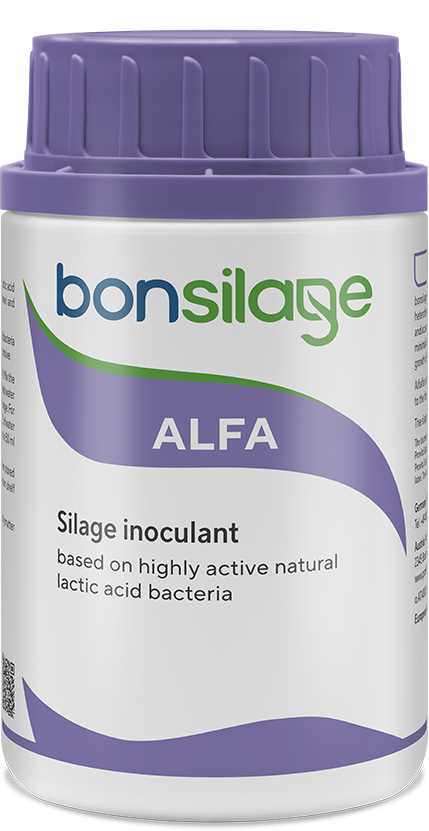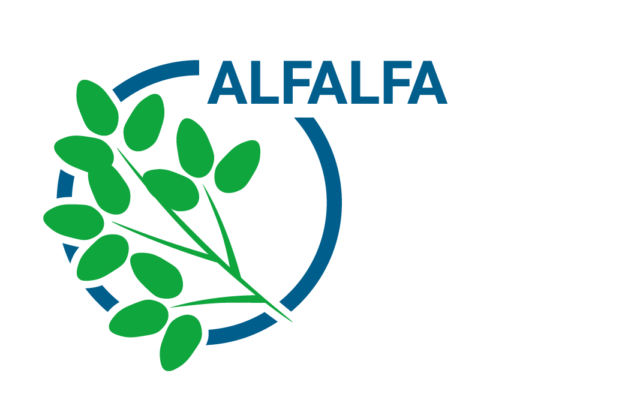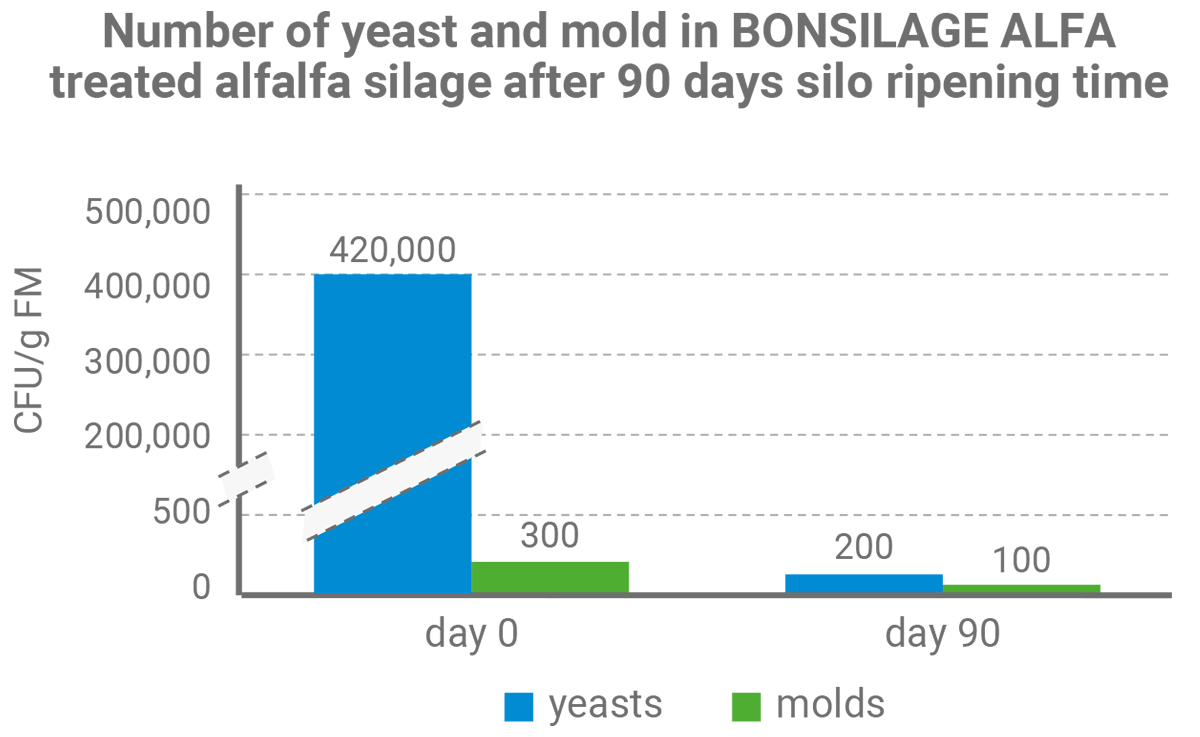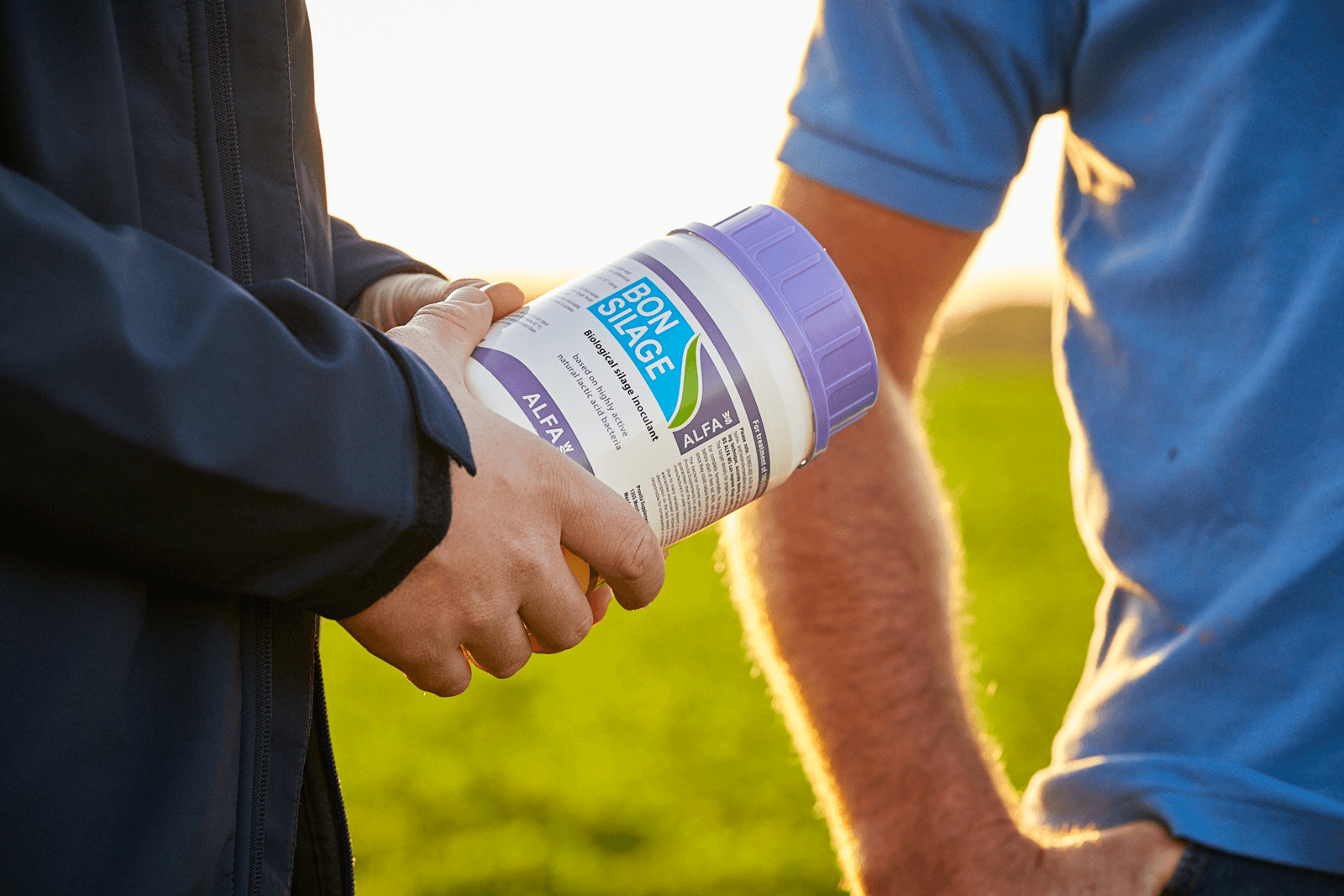

Provides a rapid pH drop
Active inhibition of Clostridia growth
Protection against reheating
Description
bonsilage ALFA ensures a reliable fermentation process for alfalfa haylages in standard to upper dry matter ranges. bonsilage ALFA quickly lowers the pH, effectively inhibits clostridia growth and decreases the risk of butyric acid fermentation. bonsilage ALFA also forms acetic acid which lowers the risk of reheating during feed out.
Characteristics
Find detailed product information below.
- Lb. plantarum and Lb. paracasei quickly lower the pH level by producing lactic acid in the beginning of the fermentation cycle
- Lc. Lactis is known for its active clostridia inhibition to reduce the risk of butyric acid formation, and thus reduces the protein breakdown
- Lb. buchneri produces controlled levels of acetic acid and, thus, delivers protection against reheating
Biological and water soluble silage additive
At least 250,000 CFU/g fresh matter (FM) of forage
- Alfalfa silage: 30-45% DM
- Clover grass silage: 30-45%
Selected strains of homo-and heterofermentative lactic acid bacteria
Lactobacillus plantarum, Lactobacillus paracasei, Lactobacillus buchneri, Lactococcus lactis, and dextrose
Lactic acid bacteria not less than 1.25 x 10¹¹ CFU/g product
Research
In conjunction with ISF and our Gut Hülsenberg agricultural research facility, we conduct extensive ensiling and feeding research and on-farm trials to ensure the highest level of performance from BONSILAGE products. Research trials show that bonsilage ALFA WS dramatically inhibits active clostridia when compared to untreated alfalfa haylage. It also suppresses the number of yeasts and molds after 90 days ensiling, which protects haylage quality.



 USA
USA International
International Brasil
Brasil Español
Español